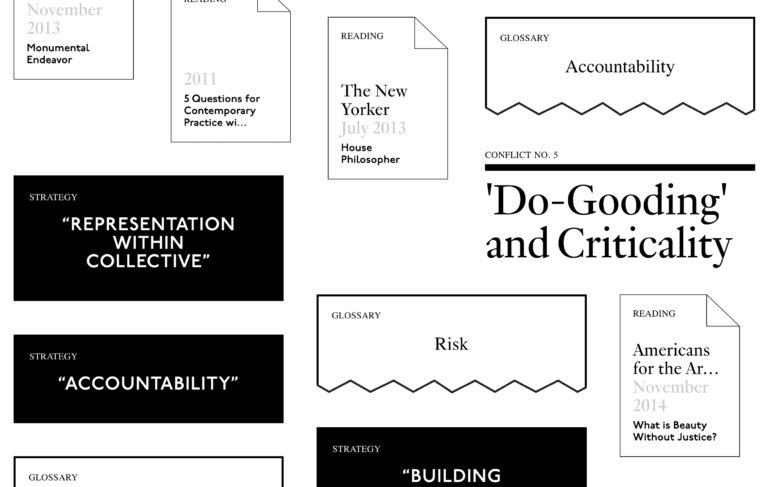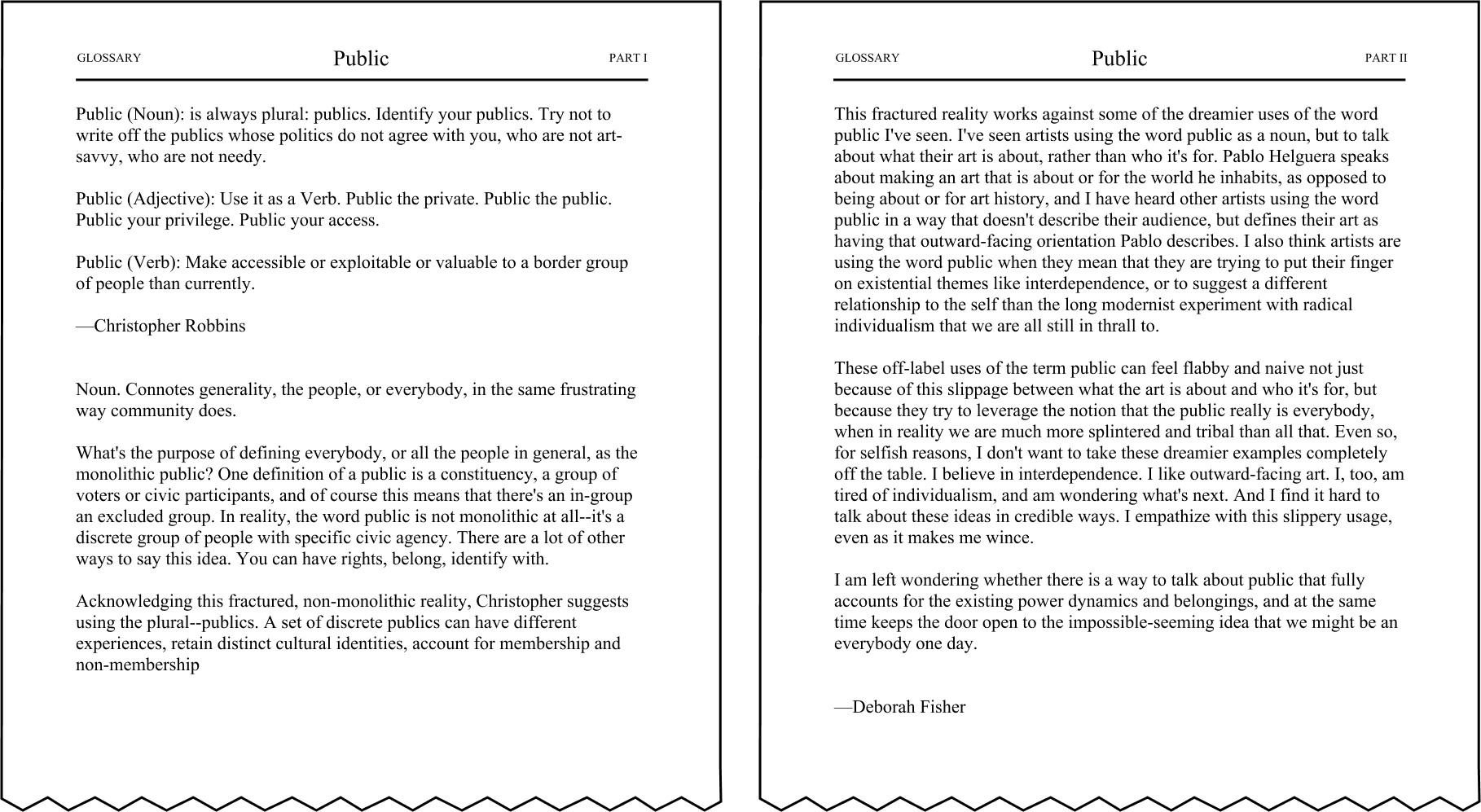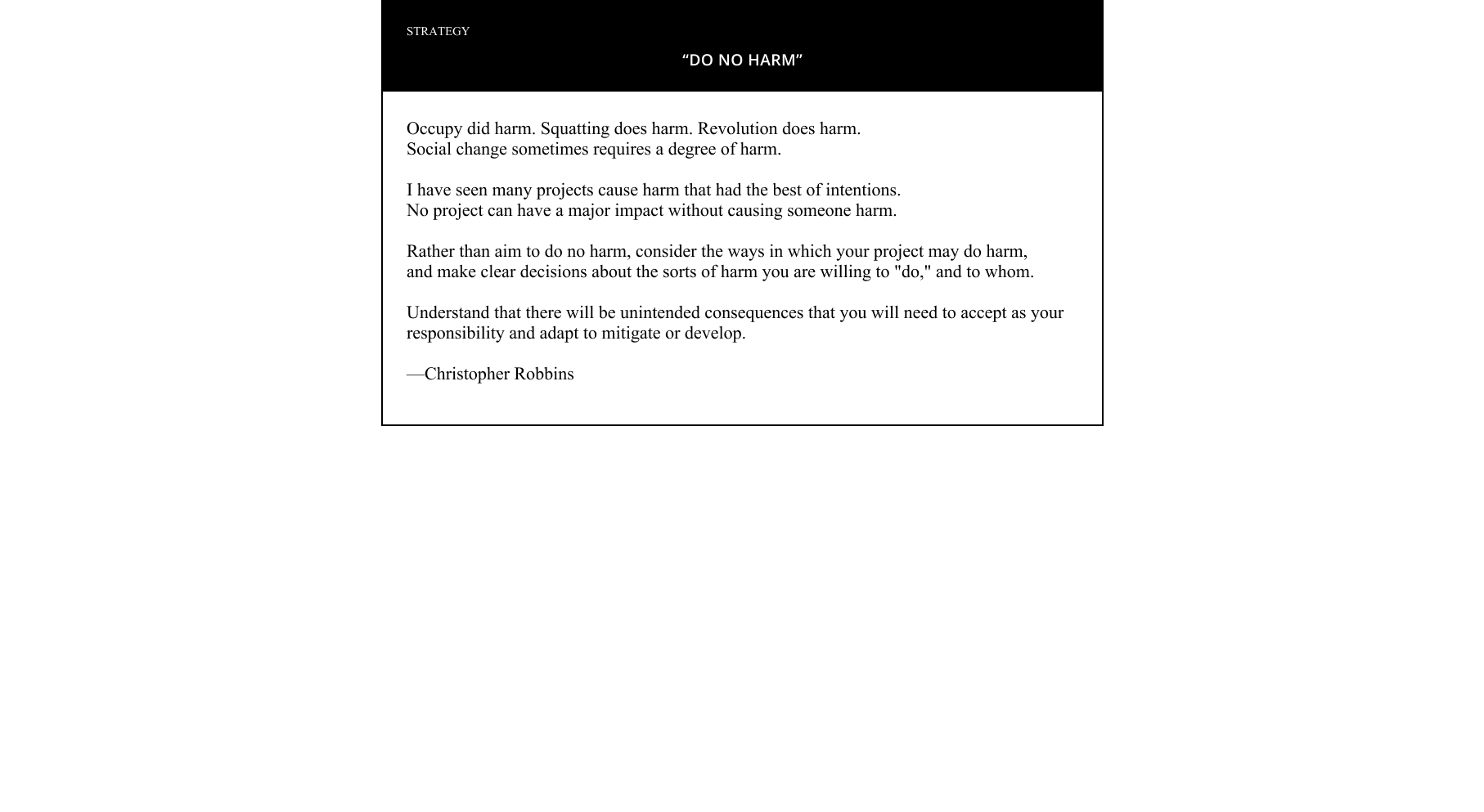
Event
CONFLICT NO. 1: Accountability – Artist, Curator, Institution, Funder
Oct 7, 2014
When art is understood to impact social justice, all players involved, including artists, curators, funders, and participants, invariably are held accountable towards such an ethical goal or standard. But how exactly is art to be held accountable, given the continuously evolving nature of both art and justice? Who and what is art accountable to? Can an art project be accountable to an audience? A process? An outcome? How do we locate accountability among different constituents? Is an art project accountable to the same things that other social justice work is accountable to?
The impact and meaning of art is dependent of its makers but also the context in which it finds itself — affiliated institutions, audiences, political, social and cultural environments. Justice is a similarly evolving construct that undergoes continuous negotiation and interpretation by various individual and institutional players. Attempting to manifest either art or justice (or both) is something of a group effort, and stakeholders are often driven by different, divergent, or even oppositional agendas.
How do we negotiate ethically with these varied constituencies? If we can’t reconcile the expectations of artists, curators, funders, and participants, how can ethical standards be developed?
This episode will look at the notion of ethics, and ask whether it’s productive to draw an equivalency between art and social justice because they are both in a state of continual evolution based on the participation of multiple players, each with their own interests and investments.
ART CASE STUDY
Thomas Hirschhorn
Gramsci Monument, Forrest Houses, Bronx, 2013
HOST
Yasmil Raymond, Curator,
Dia Art Foundation
GLOSSARY
Harm
Dark Matter
Authority
Field Work
Intentionality
Mocksituation
Ownership
Public
Risk
Accountability
Participation
STRATEGY
Field Work
Accountability
Do No Harm
Artwashing
CONFLICT NO. 1 | ART COMMISSION
Norene Leddy and Liz Slagus
The Social Social
2015
SocialSocial is an ongoing project by SexEd (Norene Leddy and Liz Slagus). It is a model for artists to work with people who actively engage with the public, but not in an art context, to bring a fresh perspective to socially engaged art. The concept: dinner, drinks, a brief presentation on the history and current examples of socially engaged art projects, and conversations about how to make this work more accessible through the language and strategies of people who do not work in the art world directly. Inspired by a conversation with the Art and Social Justice Working Group, SocialSocial’s goal is to address some of socially engaged art’s recurring questions and concerns around public(s) and audience, the ethics of credit and inclusion, and the desire to hear from voices outside of the art world. The first SocialSocial was held on November 12, 2014 and included nine participants from the fields of community activism, social work, public education, security, health care, AIDS activism, and science. Documentation from the first SocialSocial will be posted online in spring 2015, so that others can hold SocialSocials and we can continue this dialogue that is critical to the field.
The Social Social was commissioned by the Vera List Center for Art and Politics and A Blade of Grass in response to the first Art and Social Justice Working Group conflict – Accountability: Artist, Curator, Institution, Funder.
– – –
LIZ SLAGUS consults in the areas of art and technology education, public programming and community engagement. In 2009, the State Library of Queensland awarded her the Creative Fellowship for Art & Technology to develop the programming and outreach strategy for Brisbane’s new digital culture center, The Edge. During 2008, she produced the youth component for the 01SJ Biennial (San Jose, CA), and co-curated “1800 Frames” for City Without Walls (Newark, NJ)—beginning a curatorial partnership with Norene Leddy. Between 1998-2008, Liz developed and managed Eyebeam’s education programs, exploring new teaching and learning techniques and models for engagement. As Director of Education and Public Programming, she co-curated and oversaw large-scale exhibitions, and Eyebeam’s public presentations. Liz continues to lecture about arts education, production and collaboration. She holds a BA in Art History and Anthropology from Bucknell University and an MA in Visual Arts Administration from NYU.
NORENE LEDDY’s artwork examines how technology is used in relationship to marginalized populations. Projects include working with sex workers, inner-city girls, LGBTQ youth, and others to explore ways that high and low technology can be used for protection and self expression, from the latest in GPS and mobile software to simple DIY kits. In addition to drawing, video, sculpture and installation; related performances and workshops are frequently part of her artistic practice. Her work has been shown internationally at venues including Eyebeam (New York), Henie Onstad Kunstsenter (Norway), and Sarai Media Lab (India). She has been the recipient of numerous grants, awards and residencies including a Fulbright Fellowship, two Eyebeam residencies, and funding from NYSCA, Bronx Council for the Arts, and the Experimental Television Center. In September Norene was nominated for a 2011 World Technology award. Norene earned her B.F.A. from Boston University in 1994 and a M.F.A. from Parsons The New School for Design in 2000, where she is now a Part-time Assistant Professor. In 2008, she started an ongoing curatorial collaboration with Liz Slagus. Together they have curated exhibitions for City Without Walls, Kean University, and Gallery Aferro. She is online at http://www.nobetty.net.
CONFLICT NO. 1 | READINGS
The New Criterion
September 2013
The Artist is Present in the Bronx
Link
Panero, James. “The Artist is Present in the Bronx.”
The New Criterion, Volume 32 September 2013, on page 52
Nka: Journal of Contemporary African Art
Spring 2014
Black Collectivities: An Introduction
Copeland, Huey and Naomi Beckwith. “Black Collectivities: An Introduction.”
Nka: Journal of Contemporary African Art, 34, Spring 2014, 4-7.
Link
“Black Collectivities” selectively reproduces and expands on the proceedings of a conference held in Chicago in May 2013 that brought together an international roster of artists, art historians, cultural critics, and curators invested in the histories and futures of collaborative practice in Africa and its diasporas. In this article, conference organizers Huey Copeland and Naomi Beckwith introduce the aesthetic, conceptual, and political stakes animating the conference and the issue emerging from it with an eye toward both critiquing mainstream artistic discourses around collectivity and articulating the centrality of black cultural practices to them.
The Fluxus Performance Workbook
Friedman, Ken, Owen Smith, and Lauren Sawchyn, eds.
The Fluxus Performance Workbook. Performance Research e-Publications, 2002.
Link
Fluxus was an iconic and informal group of international avant-garde artists working in a wide range of media that was active from the early 1960s to the late 1970s. Their activities included public concerts or festivals and the dissemination of innovatively designed anthologies and publications, including scores for electronic music, theatrical performances, ephemeral events, gestures and actions constituted from the individual’s everyday experience. Other types of work included the distribution of object editions, correspondence art and concrete poetry. This book is a collection of classic Fluxus scores.
Theatre of the Oppressed
Link
Publics and Counter Publics
Link
Network
Related
Conversation, Seminar
Projects A-E: Celebrating the Art + Social Justice Working Group

Jun 4, 2016
Exhibition

Projects A-E
Jun 4, 2016
CONFLICT NO. 2: Authorship, Collective and Other
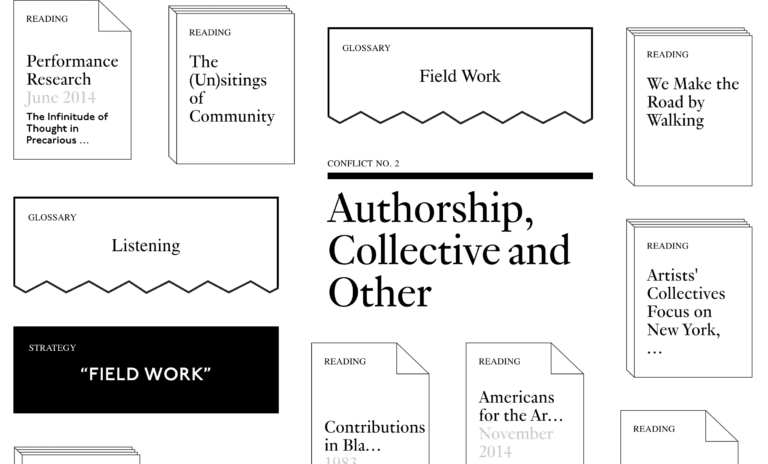
Dec 10, 2014
CONFLICT NO. 3: Audience, Participation, Spectatorship, Modes of Address
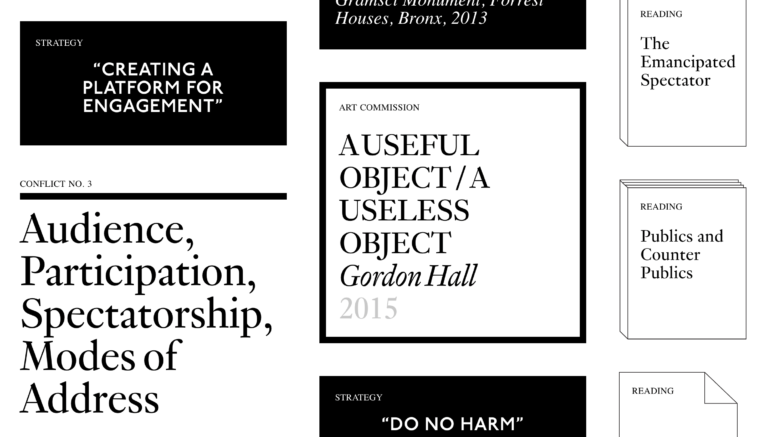
CONFLICT NO. 4: Audience, Participation, Spectatorship, Modes of Address
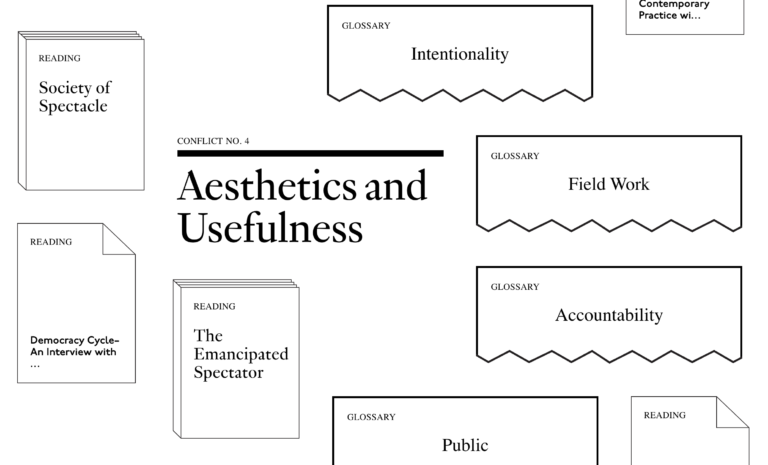
Jun 4, 2014
CONFLICT NO. 5: ‘Do-Gooding’ and Criticality
